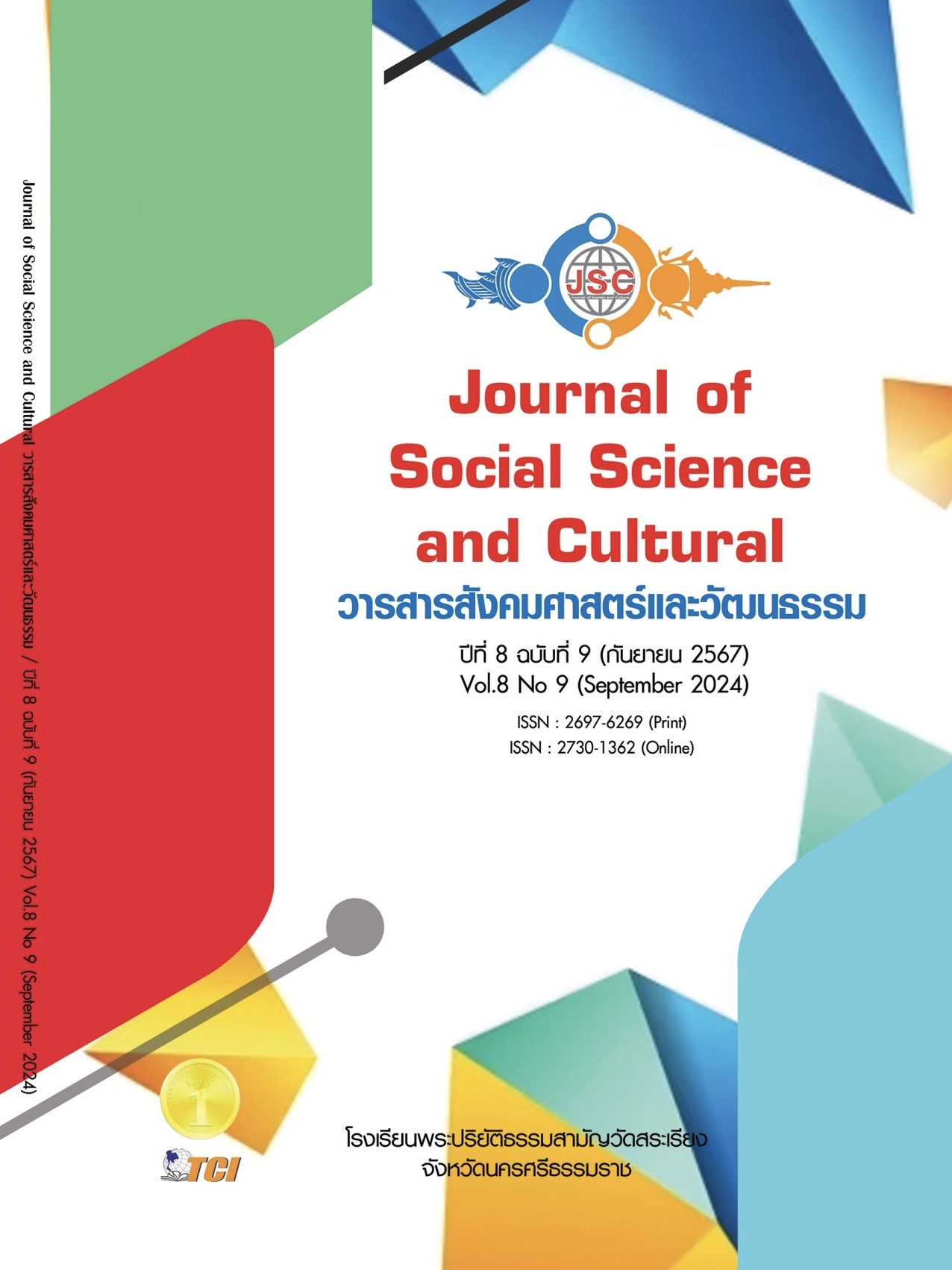CASH HOLDINGS, WORKING CAPITAL AND CAPITAL STRUCTURE INFLUENCES FINANCIAL RISK OF COMPANIES LISTED ON THE MARKET FOR ALTERNATIVE INVESTMENT - MAI
Main Article Content
Abstract
This research aims to study the influence of cash holding, working capital and capital structure on the financial risk of companies in the Market for Alternative Investment (MAI) stock exchange. It is quantitative research. The research sample is companies listed in the Market for Alternative Investment (MAI) in the agricultural and food industry, consumer goods, industrial goods, real estate and construction, resources, services and technology groups in the Market for Alternative Investment (MAI) stock exchange between 2021 and 2023 in Thailand, totaling 212 companies for 3 years. The sample group was selected according to the conditions, excluding 9 companies with incomplete data and excluding the financial industry group because the financial report content is different from the financial reports of other industry groups. The total sample is 549 samples. The data were analyzed using descriptive statistics, including frequency, percentage, mean and standard deviation. And the multiple regression analysis found that holding cash has the same influence on financial risk with a significant level at 0.05 (p-value = 0.000 less than 0.05) and working capital has the same influence on financial risk with a significant level at 0.05 (p-value = 0.000 less than 0.05). The shareholding structure has no influence on financial risk (p-value = 0.068 more than 0.05). The control variable of this research is the size of the business (p-value = 0.822 more than 0.05) and the ability to make a profit has no influence on financial risk (p-value = 0.599 more than 0.05). The research shows that the importance of planning operations, holding cash, working capital of the business due to holding cash and having more working capital has an influence on the business to have more financial risk.
Article Details
References
บริษัทหลักทรัพย์จัดการกองทุน ไทยพาณิชย์ จำกัด. (2567). ตลาดหลักทรัพย์เอ็ม เอ ไอ. เรียกใช้เมื่อ 10 มิถุนายน 2567 จาก https://www.scbam.com/th/knowledge-glossary/equity/mai
รัฐติพร กมลกิจเจริญ. (2552). ความสัมพันธ์ระหว่างโครงสร้างเงินทุนและความสามารถในการทำกำไรของ บริษัทจดทะเบียนในตลาดหลักทรัพย์แห่งประเทศไทย. ใน สารนิพนธ์บัญชีมหาบัณฑิต สาขาวิชาการบัญชี. มหาวิทยาลัยเกษตรศาสตร์.
สุภาวดี มัจฉิมาดิลก. (2564). ความสัมพันธ์ระหว่างโครงสร้างเงินทุนกับความสามารถในการทำกำไรของบริษัทจดทะเบียนในตลาดหลักทรัพย์แห่งประเทศไทย SET. ใน สารนิพนธ์บัญชีมหาบัณฑิต สาขาวิชาการบัญชี. มหาวิทยาลัยธุรกิจบัณฑิตย์.
Abor, J. (2005). The effect of capital structure on profitability: an empirical analysis of listed firms in Ghana. Journal of Risk Finance, 6(5), 438-445.
Ahmed et al. (2022). Does economic risk affect corporate cash holdings? Journal of Economic and Administrative Sciences, 38(3), 471-484.
Giacomo, M. & Edoardo, P. (2017). US REITs capital structure determinants and financial economic crisis effects. Journal of Property Investment & Finance, 35(6), 556-574.
Godfred et al. (2010). Risk exposure and corporate financial policy on the Ghana Stock Exchange. The Journal of Risk Finance, 11(3), 323-332.
Mesquita, J. M. C. & Lara, J. E. (2003). Capital structure and profitability: The Brazilian case. In Academy of Business and Administration Sciences Conference. Vancouver.
Tongkong, S. (2012). Key Factors Influencing Capital Structure Decisions and its Speed of Adjustment of Thai Listed Real Estate Companies. Procedia-Social and Behavioral Sciences, 40(2012), 716-720.
Zeitun, R. & Tian, G. (2007). Capital Structure and Firm Performance: Evidence from Jordan. Australia Accounting Business and Finance Journal, 1(2007), 148-168.


